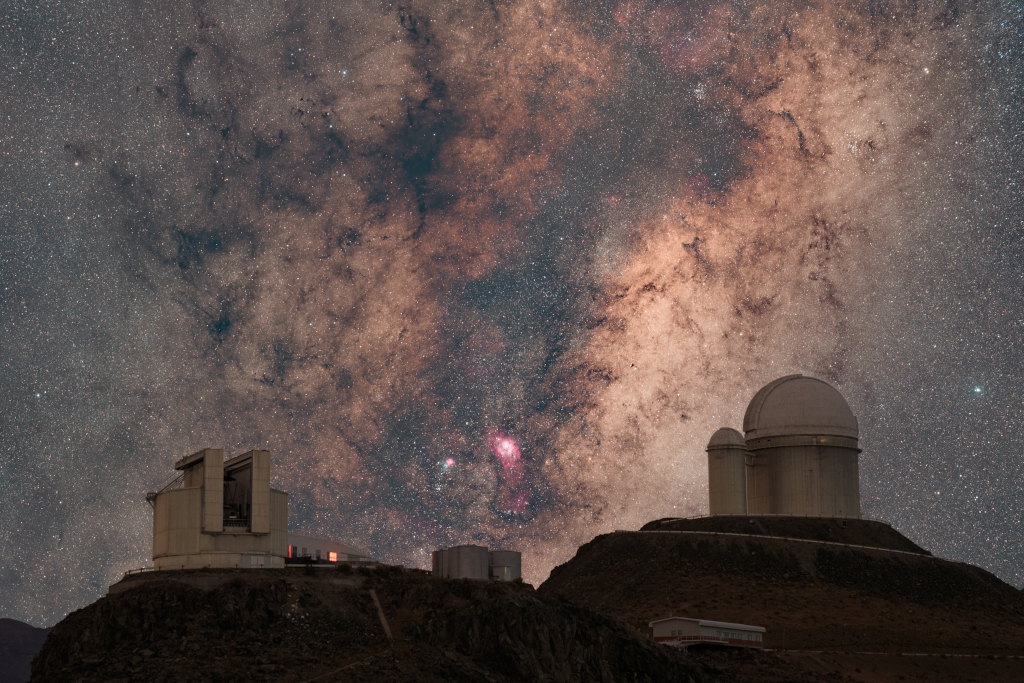驶向银河之心
The picture shows the a composite image of Monument Valley, Utah, USA in the foreground, and the plane of the Milky Way Galaxy including
the Galactic Center in the background. Please see the explanation for more detailed information.
图片前景为美国犹他州纪念碑谷的合成图像,背景为银河系平面,包括银河系中心。有关更多详细信息,请参阅说明。










